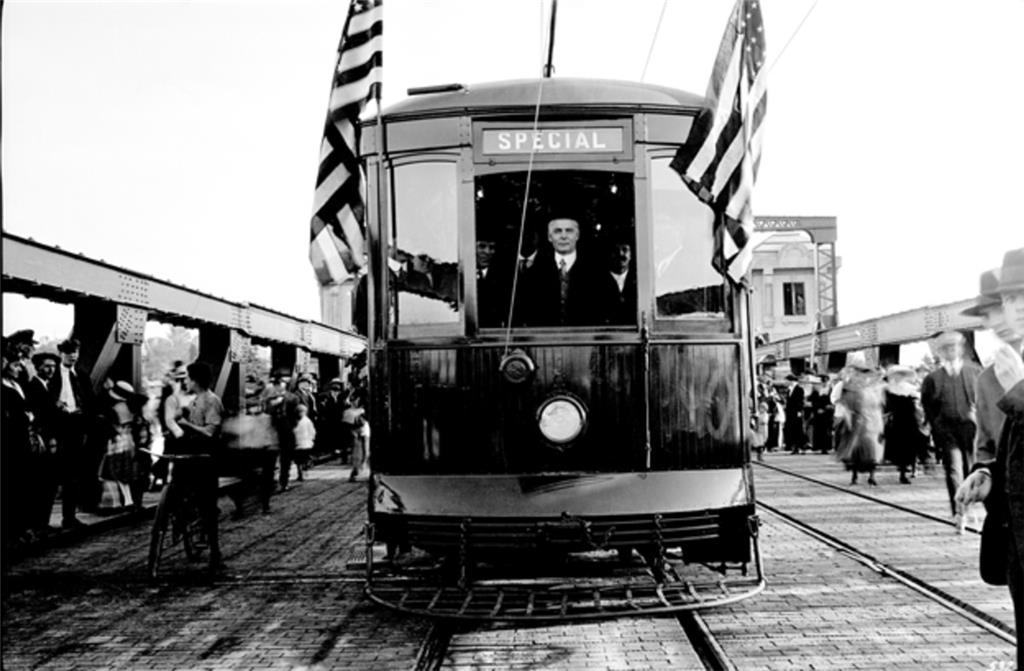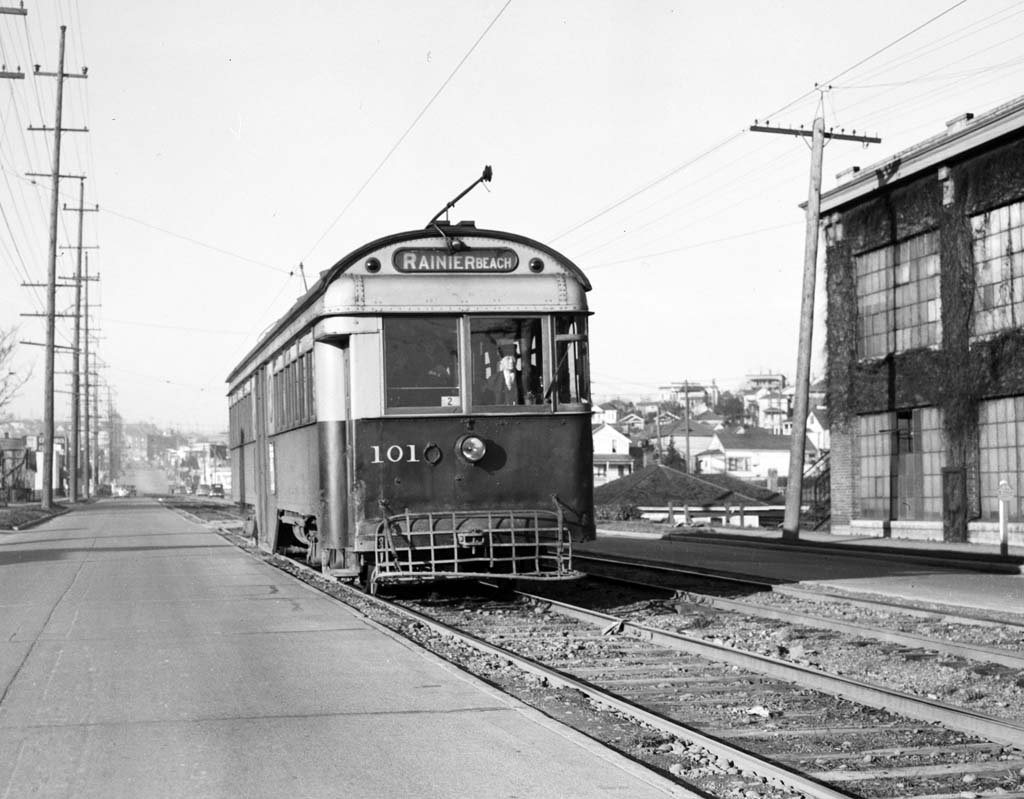-----
 |
| Mayor Ole Hanson rides across University Bridge on the Seattle MUNI's inauguration, July 1, 1919. (Seattle Municipal Archives) |
The first municipal streetcar would run in Seattle on July 1, 1919, when Mayor Ole Hanson (who negotiated the system purchase) drove across the University Bridge to dedicate what was seen as Seattle's victory over private transit companies. The Seattle MUNI was certainly widespread as it owned 3 cable car lines and 26 different streetcar lines. However, there was a problem: The city screwed up in buying the streetcar.
 |
| A Seattle car to Mt. Baker discovers just how screwed up the MUNI system is, financially and can't take it anymore (The Seattle Times) |
There were many factors that made the Seattle MUNI one of the most financially screwed-up streetcar systems in America: The State Supreme court had blocked providing subsidies that other municipal systems were usually approved for, causing the MUNI to run on fares alone, and bonds were out of the question as automakers lobbied for bond houses to deny the city any means of sustaining itself.
 |
| A builder's photo of a new Seattle Transit electric bus, 1940 (Historylink.org) |
Following the failure of the Beeler Plan, Seattle's electric railways fell into a death spiral with the closure of many interurban and street lines. The Seattle, Renton and Southern interurban line, which was developed by Frank Osgood as the first interurban railway in Puget Sound, closed in 1938 after the city council refused to both renew its franchise and allow the company to pave over a dangerous bit of track through downtown Renton known as the "Thoroughfare of Death", which caused many problems for cars and pedestrians.
 |
| The infamous "Thoroughfare of Death": unpaved tracks inbetween paved roads through downtown Renton (Historylink.org) |
Thankfully, Franklin Delano Roosevelt's New Deal stepped in, via the Reconstruction Finance Company, to loan a cool $10.2 million ($189 million in 2020 dollars) to the city of Seattle to completely relieve them of their streetcar operations. Thanks to the efforts of Mayor Arthur Langlie, Stone and Webster's mortgages were paid off and the Beeler Plan (now revised) was put into place. All remaining interurban and streetcars were sold for scrap, along with rails and other infrastructure, while the wires would be repurposed for trolley bus use. The last car would run on 8th Avenue in Ballard, Seattle, on April 13, 1941.
 |
| A sadly-leaning Seattle MUNI car trundles along Ballard Avenue, 1940 (Historylink.org) |
Seattle would not have a new streetcar system until 1982 with the opening of the George Benson Memorial Waterfront Streetcar, nor would it have a dedicated transit system until 2007, with the opening of the South Lake Union Trolley. (Hehehe...) The Municipal Street Railway would be rebranded into Seattle Transit in 1939, which folded into King County Metro in 1973. Between that time, the only big transit shakeup in Seattle was the iconic World's Fair Monorail.
 |
| The Seattle Monorail and Space Needle in the 1960s, with no street tracks for over 20 years (VintagePackRat) |
-----
Thanks for reading today's Trolley Thursday post! Next week, we finish off February by looking at the George Benson Waterfront Streetcar (which, incidentally, is the first trolley line I ever actually saw on video) and the South Lake Union Trolley (hehehe... sorry, I'll stop laughing). Until then, ride safe everyone!

No comments:
Post a Comment